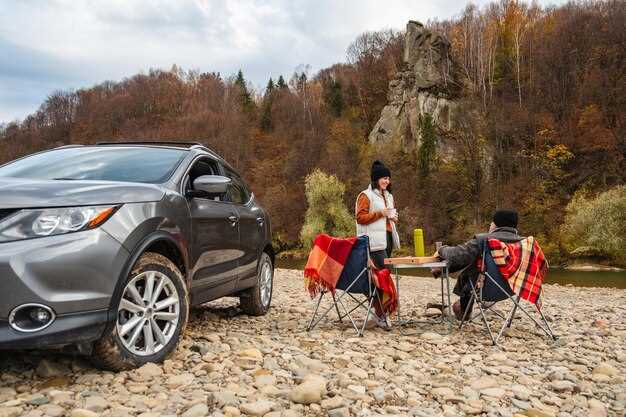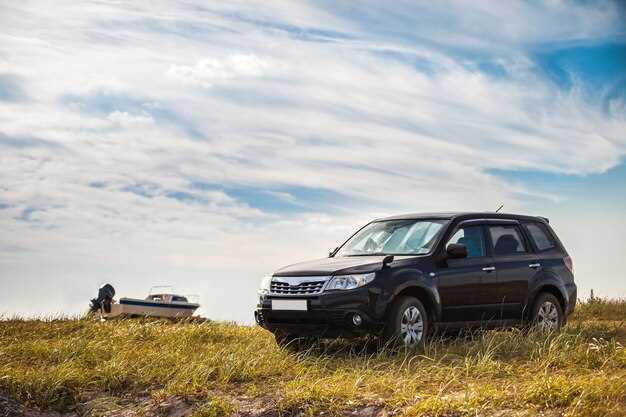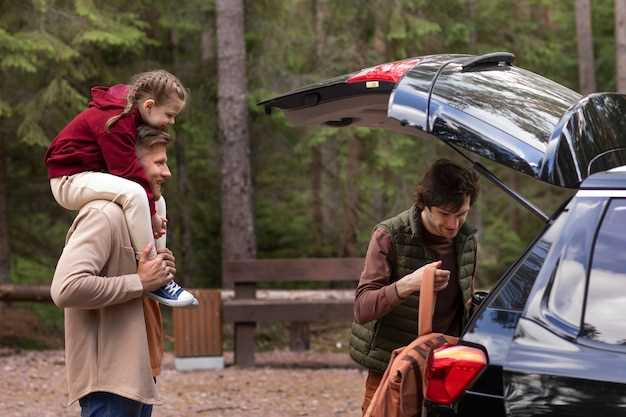
The family SUV segment has become increasingly competitive, with manufacturers striving to deliver vehicles that offer more than just spacious interiors. Among the prominent players in this field are the Toyota Highlander and the Honda Pilot. Both models have garnered attention for their reliability, safety features, and family-friendly amenities, yet they each offer distinctive characteristics that appeal to different types of drivers.
In this showdown, we will delve into the strengths and weaknesses of each vehicle, evaluating aspects such as performance, interior comfort, technology integration, and storage capacity. The Pilot has long been celebrated for its spaciousness and versatility, while the Highlander is known for its strong reputation for reliability and innovative safety technologies.
Ultimately, this comparison aims to help families make an informed choice when selecting their ideal SUV. By examining the core features that define the Toyota Highlander and the Honda Pilot, we will uncover which vehicle stands out as the better option for those with active lifestyles.
Toyota Highlander vs Honda Pilot: Family SUV Showdown

The Toyota Highlander and Honda Pilot are both popular choices among family SUVs, each bringing unique strengths to the table. The Highlander, known for its reliability and smooth driving experience, offers an upscale interior with three rows of seating and the ability to accommodate up to eight passengers. Its fuel efficiency is a notable advantage, especially with the available hybrid model, making it an economical choice for families.
On the other hand, the Honda Pilot excels in space and versatility. It features a roomy cabin with ample cargo capacity, allowing families to pack their essentials for road trips or daily activities. The Pilot’s innovative Magic Seat system in the second row makes it easy to configure seating, ensuring maximum flexibility. Additionally, Honda’s renowned safety features create a reassuring environment for families.
Performance-wise, the Highlander offers a choice of a four-cylinder or V6 engine, balancing power with fuel economy. Meanwhile, the Pilot is equipped with a robust V6 engine that delivers strong acceleration and towing capacity, making it suitable for adventurous families. Both SUVs come equipped with advanced infotainment systems, but the Highlander provides a more intuitive interface, enhancing the overall user experience.
In conclusion, choosing between the Toyota Highlander and Honda Pilot largely depends on specific family needs. The Highlander is perfect for those prioritizing efficiency and luxury, while the Pilot shines in practicality and space. Ultimately, both vehicles stand strong in the family SUV market, making them worthy contenders for consideration.
Comparing Fuel Efficiency and Performance Features
When it comes to family SUVs, fuel efficiency and performance are critical factors for many buyers. The Toyota Highlander and Honda Pilot both offer unique strengths in these areas, making them popular choices among families looking for reliable and capable vehicles.
Fuel Efficiency
The Highlander has made significant strides in fuel efficiency in recent years, offering a hybrid variant that enhances its appeal for eco-conscious drivers. Here’s a breakdown of the fuel economy for both models:
- Toyota Highlander:
- Gasoline Engine: Estimated 21 mpg city / 29 mpg highway
- Hybrid Engine: Estimated 36 mpg city / 35 mpg highway
- Honda Pilot:
- Gasoline Engine: Estimated 20 mpg city / 27 mpg highway
The Highlander’s hybrid option provides a significant advantage in fuel economy, especially for families that drive frequently in urban settings.
Performance Features

Both the Highlander and Pilot offer a range of performance features that contribute to a comfortable and confident driving experience.
- Toyota Highlander:
- Engine Options: 3.5-liter V6 or 2.5-liter 4-cylinder hybrid
- Towing Capacity: Up to 5,000 lbs
- All-Wheel Drive Availability: Enhances traction and stability
- Drive Modes: Eco, Sport, and Normal for adaptable performance
- Honda Pilot:
- Engine Option: 3.5-liter V6 with a 9-speed automatic transmission
- Towing Capacity: Up to 5,000 lbs
- All-Wheel Drive Availability: Excellent for various terrains
- Drive Modes: Intelligent Traction Management for enhanced driving conditions
The Highlander’s hybrid engine option may provide a smoother experience for those seeking a balance between performance and efficiency. Meanwhile, the Pilot focuses on more traditional powertrain options that deliver solid performance without sacrificing fuel efficiency.
In summary, while both the Toyota Highlander and Honda Pilot deliver commendable performance and fuel efficiency, the choice between them will depend largely on individual preferences regarding hybrid technology and driving dynamics.
Interior Space and Comfort: Which SUV Suits Family Needs?
When it comes to family SUVs, interior space and comfort are two of the most crucial factors for parents considering their next vehicle. The Toyota Highlander and Honda Pilot are both well-equipped to meet the demands of a growing family, but they approach space and comfort in different ways.
The Honda Pilot offers generous seating capacity for up to eight passengers, making it ideal for larger families or those who frequently carpool. Its spacious third row is designed with adult comfort in mind, providing ample legroom and headroom. The Pilot also features smart storage solutions, with numerous cubbies and cupholders distributed throughout the cabin, enhancing convenience for families on the go.
On the other hand, the Toyota Highlander has a slightly smaller seating capacity, accommodating up to seven passengers, but it makes up for this with an emphasis on premium materials and a more refined ambiance. The Highlander’s second-row seats can be configured for either captain’s chairs or a bench, allowing families to customize their seating arrangement based on their needs. Additionally, the interior design focuses on user-friendly technology and controls, ensuring that parents can easily manage their family’s entertainment and comfort.
In terms of cargo space, the Pilot excels with a larger cargo area that allows for more luggage and gear storage when both rows are in use. The Highlander, although having slightly less overall cargo capacity, still offers a practical layout and various configurations to maximize utility.
Ultimately, choosing between the Toyota Highlander and Honda Pilot for family needs revolves around individual preferences for space, comfort, and versatility. While the Pilot may attract larger families with its abundant seating and cargo options, the Highlander’s upscale interior and customizable seating could serve families looking for a more sophisticated driving experience. Either way, both SUVs are commendable choices for families seeking comfort on the road.
Safety Ratings and Technology: Making the Right Choice
When comparing the Toyota Highlander and Honda Pilot, safety ratings and technology play a crucial role in influencing a buyer’s decision. Both SUVs are equipped with advanced safety features, but their ratings can differ significantly, impacting overall peace of mind for families.
The Toyota Highlander consistently receives high marks in crash tests conducted by agencies such as the National Highway Traffic Safety Administration (NHTSA) and the Insurance Institute for Highway Safety (IIHS). Its robust suite of safety technologies, including adaptive cruise control, lane departure warning, and automatic emergency braking, enhances its appeal as a family-friendly vehicle. Moreover, the Highlander benefits from Toyota’s Safety Sense suite, which incorporates additional driver-assistance features to ensure a safer driving experience.
On the other hand, the Honda Pilot is also highly rated for safety, often earning top scores in similar evaluations. It features the Honda Sensing suite, which includes forward collision warning, road departure mitigation, and traffic sign recognition. These technological advancements not only contribute to superior safety ratings but also provide drivers with tools to respond effectively to potential hazards on the road.
While both vehicles excel in safety, choosing between them may come down to specific technology preferences. The Highlander offers a more extensive infotainment system with user-friendly interfaces and seamless smartphone integration. In contrast, the Pilot emphasizes passenger comfort and practicality, with features like cabin talk and built-in vacuum cleaners available in some trims.
Ultimately, the decision between the Toyota Highlander and Honda Pilot should be guided by individual safety priorities and technological needs. Evaluating safety ratings alongside desired features will help ensure that families make a well-informed choice when selecting their next SUV.
